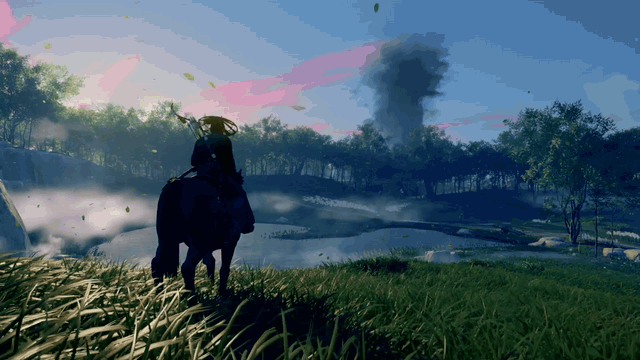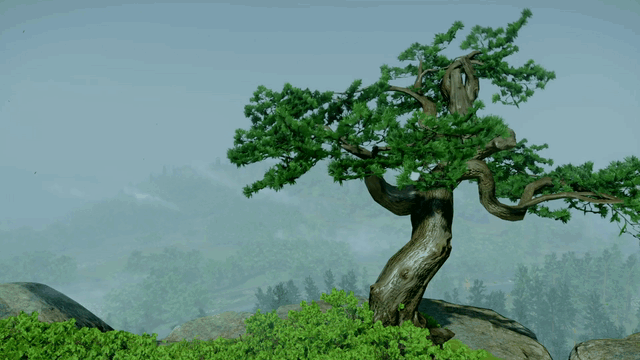The Art of Ghost of Tsushima

Lately I’ve been playing Ghost of Tsushima on my PS4. In case you didn’t know, this is a game where you take the role of a Samurai called Jin Sakai in a journey to defend his homeland from the Mongol invasion of Japan which occurred in the 13th century.

Although I spent many hours playing, I haven’t actually advanced much in the story. The reason is simple. This game has astonishing environmental art used to produce a vivid and lush representation of the Tsushima island. I spend most of my game time just wandering around, walking under the cherry blossom trees, feeling the wind brushing the grass and then kissing my face.
I started wondering. What makes the art of this game so enchanting? Why do I feel at peace riding on my horse through the yellow forests?
I believe the reason is that the art of this game is realistic and unrealistic at the same time. Let me explain.

The game doesn’t have any kind of imaginary creatures or vegetation. All trees and meadows are made of something you can find in real life. However, and here comes the brilliance of the art direction, they built the environment as if they were painting a drawing. For example, you can see a huge meadow filled with only one type of flower such as spider lily, or a forest covered with one type of tree. Moreover, the colors are warm and saturated which makes you feel at ease. In addition, you can hear the sound of the wind flirting with grass in an ever present way, touching the flowers, and arguing with the trees which gives you a feeling of tranquility. Also, every now and then you hear the tweet of a bird which gives a sense of safety and love. All these things combined give you the feeling of actually being there on the island. You know this environment is not real but at the same time you feel it is. In my opinion the art team made an extremely smart decision when they didn’t go for hyperrealism, but instead they decided to paint a real environment with the brush of a dream.
